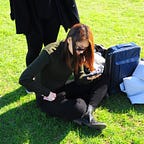User Centred Design (UCD), has always being mention in the industry. It seems like this word is on of the keys to design for products and services, but what does it really means?
According to the Interaction Design Foundation (IDF), a user centred design is an iterative design process in which designers focus on the users and their needs in each phase of the design process. UCD calls for involving users throughout the design process via a variety of research and design techniques so as to create highly usable and accessible products for them.
Yes! The UCD is a process which dives into our everyday workflow. Lets look at the below diagram for easier understanding:
We can see from the diagram that the UCD is an iterative process which the cycle remains closed until it meets all the requirements. So let’s talk about it one by one.
Planning
Planning is very important in the beginning of the project! It is essential to decide which way is suitable for your client. Set a timeline and schedule for your process can reduce frustrations and a feeling of lost in the middle of the project. Will the UCD process fits into an agile environment or combining with a co-design approach? How can designers working in line with the development team to ensure a smooth process with the implementation of the UCD process? These situations has to be considered when planning the start of a design and development project.
The Context of Use
The Context of Use is about understanding and responding to “actual conditions under which a given artefact/software product is used”. It is the time to define the details of the scope of a product/ service. Many methods can be use at this stage to better understand the background of your product/ service. For me, I would like to conduct expert reviews, observational studies and secondary research at this stage to find relevant data as much as I can in order to get the basics of the context of use, especially when it is in the 1st cycle of the design iteration where there isn’t any products on board. Sketches, user scenarios, personas and paper prototypes can also help to better locate the context of use of the product/ service. More methodologies can be used for instance ethnography, card sorting, role playing and usability test, especially when your product/ service is inside the loop.
Requirements
Once the context of use has been defined, we can generate a list of requirements smoothly base on the findings we have found from the users and stakeholders. We know their pain points and needs, so base on these we can figure out the problems in there. Requirements is a list of features where the end user may found necessary to add-on in order to fulfil their needs. It is often to have a very long list of requirements generated at the beginning, remember to prioritise the core requirements to make sure things comes in order and well-organised.
Design solutions
Now we can start to work on designing the actual interface/ product/ service according to the requirements! Brainstorming concepts, rapid sketching, creating lo-fi and hi-fi prototypes, visuals, interactions, completing the designing job towards the solution(s).
Review
This is where we evaluate the design against the requirements. We have created a prototype, so now we can take this to our designed requirements, clients and stakeholders, to see whether the designed fits the requirements and if there are anything we have missed out. If everything is fine — Congratulations! You have finished the cycle. But if not (which is more likely to happen), the cycle will have to run again, iteratively until it meets all requirements.
Hope this article gives you a brief understanding of the definition of a User Centred Design approach. And, happy iterating, designers!
